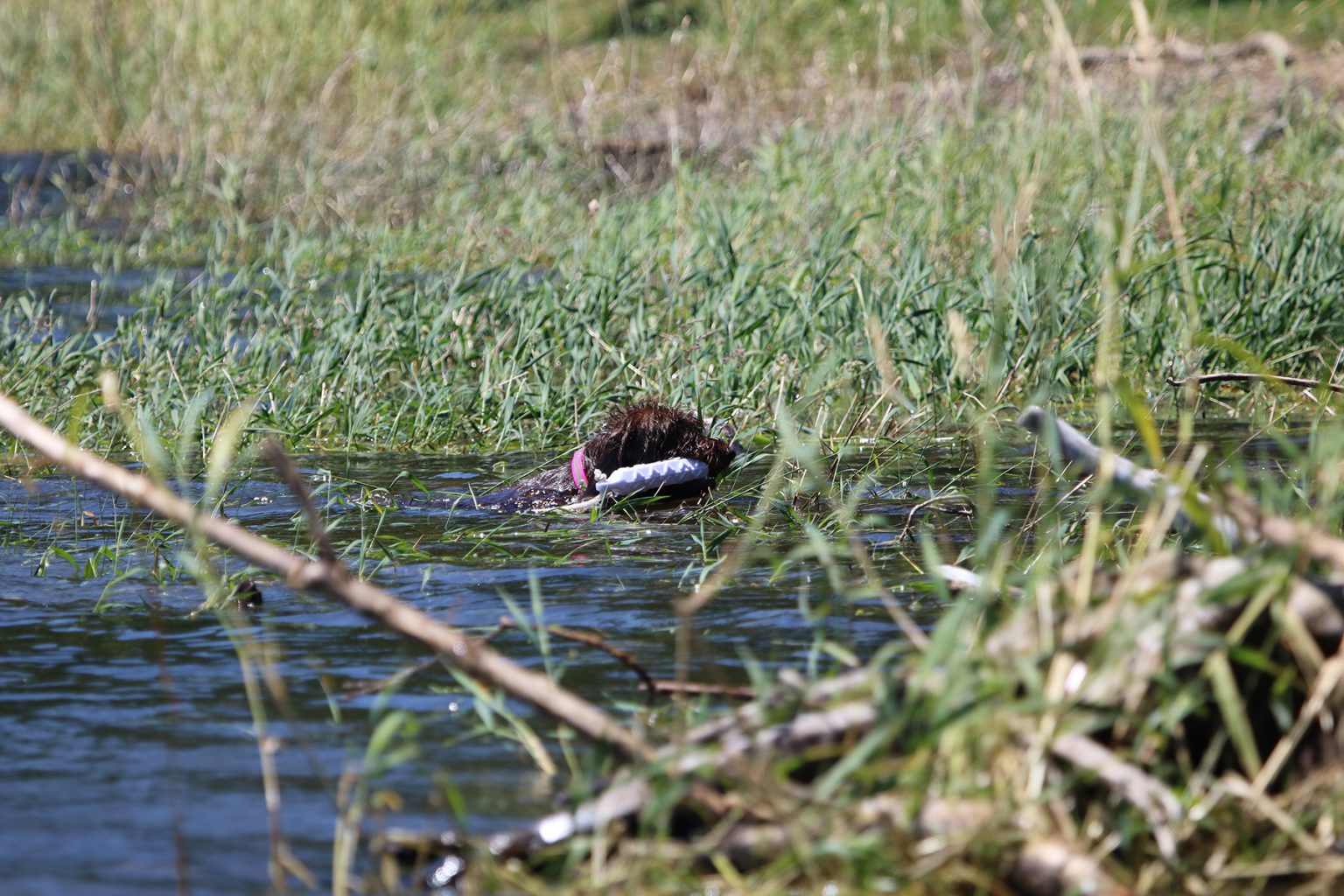The dog days of summer mean plenty of sunshine and high temperatures. It’s the perfect time to raise the bar for water training your dog in preparation for the hunting season. Once your dog is comfortable retrieving bumpers in calm water, increase the challenges. Prior to hunting season, you want your dog to be able to confidently navigate a range of conditions and situations, and in order to do this, they need practice.
A good starting point is in tall grass, especially with a pup who’ll be hunting for the first time this season. Grass that’s growing in water can tangle in a dog’s feet and feel uncomfortable at first. By tossing the bumper on to the edge of the tall grass, the dog can get a feeling for what it’s going to be like swimming through floating grass. As the dog gets comfortable with the sparse grass on the edge, toss the bumper into thicker grass. This progression is fast for some dogs, slower for others, so closely gauge your dog’s demeanor. Sometimes grass grows several feet tall, meaning the dog won’t be able to touch bottom. Conversely, thick grass close to shore may be sprouting from a muddy bottom, even firm ground. Being able to subject the dog to retrieving in grassy conditions with varied bottoms will help it get used to what it’s going to potentially encounter on the hunt.
If planning on hunting waterfowl in deep lakes or rivers, practice retrieves in these settings. Tossing a bumper into deep water will get your dog swimming strong, and in shape. In fact, swimming is one of the best ways to get your dog in hunting shape and keep excess weight off.
If hunting in rivers where there’s a current, slowly introduce your dog to this. River currents can be dangerous and claim the lives of dogs every year. When it comes time to introduce your dog to retrieving in currents, start in mild-flowing creeks, canals, or small streams. Using a neoprene dog vest during training if you’ll be using it also during hunting is a good idea as it gets the dog used to the feel of it, and it adds buoyancy. Don’t start in currents that swiftly sweep the bumper away and carry the dog 50 yards downstream before it can make the retrieve. Instead, toss the bumper into a gentle current where the dog can easily mark the moving bumper, hear your voice commands and maintain eye contact with you for reassurance.
As the dog grows comfortable with simple retrieves in moving water, progress to bigger currents. Here, the dog may rely on hand signals from you to help guide it to a bumper it loses sight of it. Waves in rapids, even on windy days on a lake, can cover a bumper or a bird. It’s easy for you to see a bumper or bird while standing on shore, but remember, a dog’s eyes are only a couple inches above the water, and they may need help marking.
Not long ago a buddy and I hunted a river bottom for pheasant and quail. He didn’t duck hunt. I did. Over half the birds we shot fell in the river and my dog couldn’t get on them fast enough. My buddy’s dog was very reluctant to retrieve in the water for the simple fact he’d done very little training in that situation. Even if you strictly hunt upland birds, your dog needs to be trained to retrieve in water.
Another good practice session is training on shorelines laden in sticks, logs and debris. Often times on bird hunts we find ourselves on shorelines that are thick with debris that’s been blown in, be it from erosion, fires or winter ice storms. These are good places to introduce your dog to prior to the hunt, as the obstacles can loom large to them. Start simple and be sure to keep it safe. Set up your dog for success, right away. The quicker they succeed, the more confident they become, the faster and more effectively they retrieve. If your dog is struggling, you may need to get in with it and be playful to make it fun. Don’t force it, as your dog’s safety is the number one priority.
Tossing a bumper into brush growing at water’s edge is also a good idea. When hunting wood ducks or mallards in the timber, cripples can quickly escape into thick shoreline cover. Teaching your dog how to negotiate and plow through such obstacles is essential.
Finally, if you have two dogs you plan on hunting with at the same time, train them, together. Even if you have a dog and your hunting partner has a dog that you intend to hunt together, practice together and get your commands lined out. The dogs should get to know one another and establish a relationship. I’ve seen a number of hunts turn bad when one dog suddenly tries to establish dominance over another dog. Driven dogs can be very possessive when it comes to not only retrieving birds, but also pleasing their master.
With the hottest days of summer upon us, now’s the time to get your dog some intense water training. It’s time well spent and will get your dog in shape for the upcoming season.
Note: Note: To see some of Scott Haugen’s puppy training video tips, visit www.scotthaugen.com. Follow Scott on Instagram, Facebook & Twitter.

